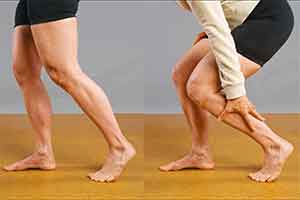Restoring leg blood flow is better option than exercise for PAD patients
 Restoring blood flow to the legs of patients withperipheral artery disease (PAD) may stop the progression of scarring in their leg muscles, according to preliminary research presented at the American Heart Association’s Arteriosclerosis, Thrombosis and Vascular Biology / Peripheral Vascular Disease 2016 Scientific Sessions.
Restoring blood flow to the legs of patients withperipheral artery disease (PAD) may stop the progression of scarring in their leg muscles, according to preliminary research presented at the American Heart Association’s Arteriosclerosis, Thrombosis and Vascular Biology / Peripheral Vascular Disease 2016 Scientific Sessions.
PAD causes pain and fatigue while walking due to poor blood circulation in arteries that supply blood to the limbs. The decreased blood flow can lead to substantial scarring and damage in leg muscles. Moreover, there are currently no available treatments once the scarring has occurred. Supervised exercise therapy and revascularization procedures (which reopen or bypass blockages in the blood vessels) may help PAD patients walk further and longer, but it is not known if these treatments affect the scarring process.
Researchers looked at levels of transforming growth factor-beta (TGF-ß1) — a protein that promotes scarring — and the amount of collagen in calf muscle biopsies from patients with PAD severe enough to be considered for surgery. Six months later, they compared changes in biopsy results among 20 patients who underwent revascularization, 19 who participated in a supervised exercise program, and 17 who had no treatment. Among the findings:
Scarring factors – collagen fibers and TGF-ß1 – increased in the exercise and control groups, but not in the revascularization group;
Patients in both the revascularization and exercise groups increased their maximum walking time on treadmill, before calf pain made it impossible to continue;
Only patients in the revascularization group improved the distance they could walk in six minutes.
Neither exercise nor revascularization treatment reversed scarring that had already taken place in the calf muscles. However, “increasing blood flow to the leg with revascularization procedures halted the progression of scarring and allowed the patients to walk longer and further,” said Duy Ha, B.S., lead author of the study and a doctoral candidate in cellular and integrative physiology at the University of Nebraska Medical Center in Omaha. “This suggests that the long-term benefits to the health of leg muscles is better with revascularization than with exercise therapy alone. Unfortunately, not all patients are candidates for these procedures, which carry significant risks, and the treated vessels may get blocked again,”
“We hope that we can develop therapies that directly decrease TGF-ß1 and its associated scarring in the leg muscles of PAD patients. Such new treatments, when used alone or along with revascularization and exercise, may maintain or enhance the ability of our patients to walk and live healthy lives,” Ha said.
Source: American Heart Association
Full bibliographic information:
Revascularization but Not Supervised Exercise Therapy Prevents Progression of Fibrosis in the Gastrocnemius of Patients With Peripheral Artery Disease While Improving Limb Function – Abstract 116
The American Heart Association’s Arteriosclerosis, Thrombosis and Vascular Biology / Peripheral Vascular Disease 2016 Scientific Sessions May 5-7, 2016 in Nashville, TN

